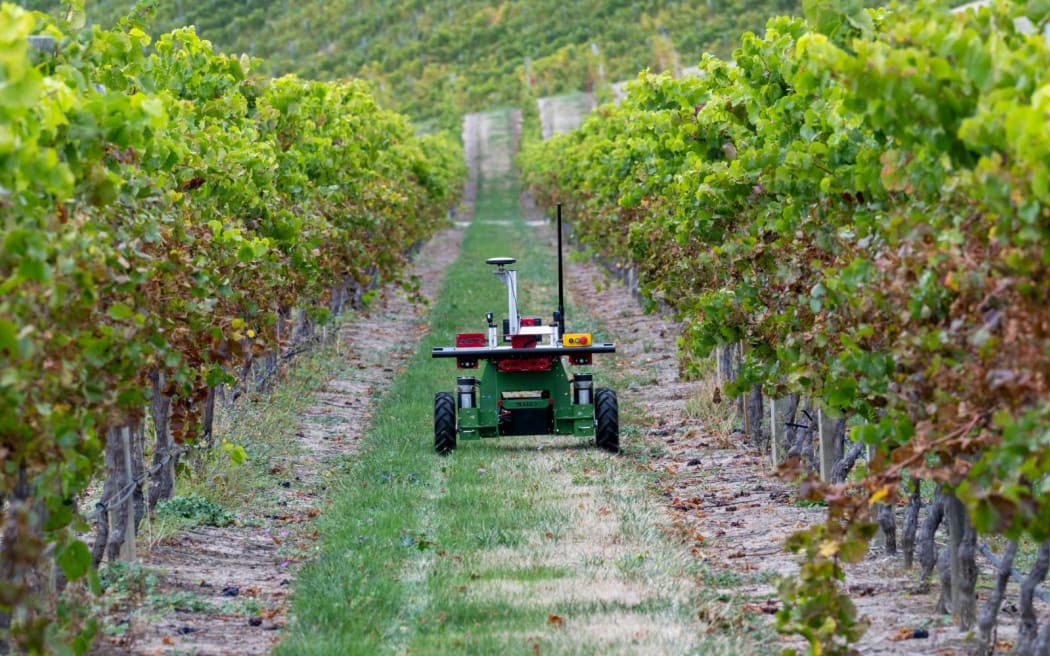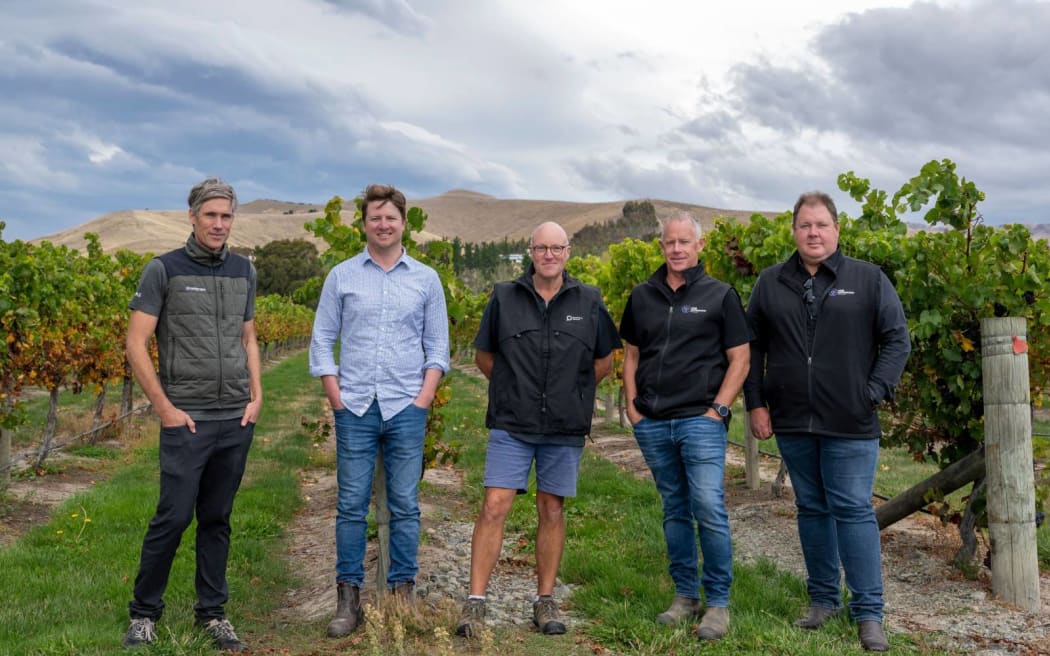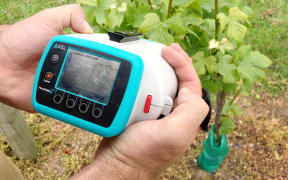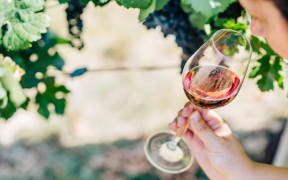
The VinEye AI grapevine disease-detecting machine. Photo: Supplied/Plant & Food Research
A human is competing against a robot installed with AI on a project aimed at detecting a disease costing the New Zealand wine industry tens of millions of dollars a year.
Grapevine leafroll disease affects berry quality and yield, particularly in red varieties, so field trials of a new disease-sensing tool known as VinEye will see a robot deployed on some wineries in Hawke's Bay and Marlborough this vintage.
Over the last three years, scientists at Plant & Food Research have been working with New Zealand agritech company Integrape. Using machine learning, the tool instantly analyses photographs of grapevines to identify plants infected with the costly disease.
Plant & Food Research pathologist Dr Karmun Chooi said the time was right to transition to a commercial-sized 60-hectare trial, where the technology will provide a faster, more accurate and more cost-effective alternative to skilled people.
Integrape has partnered with agricultural robotics supplier Agri Automation, which will provide a self-driving Burro robot that will be equipped with cameras to detect grapevine leafroll.
"For our really good wines, we really want the best grapes out of them. And so we're looking at being able to better manage for this disease so New Zealand can produce the best wine it can," Chooi said.
"Right now we're using manual labour, so a person walks up and down their vineyards looking for the viral disease, particularly in red cultivars. So what our new technology is hoping to do is to be just as good as a human, but it's actually being done by an autonomous robot going up and down the rows."

The VinEye AI grapevine disease-detecting machine. Photo: Supplied/Plant & Food Research
Grapevine leafroll can be difficult to identify because it can be confused with other issues, and it was hoped this technology would be more accurate.
Asked if a human would compete with a robot, Chooi laughed.
"Yes, it's a little bit of a competition at the moment. So we've got our trained expert Dr Vaughan Bell and he's going out and he's double-checking some of the vineyards for lethal disease, and we're going to really pair it up with what we get with the machine and robotics to see if it can do as well as he does, or potentially maybe even better."
The footage collected will then be processed and analysed by another partner on the project - agtech company Bitwise Agronomy. Bitwise Agronomy will use the VinEye algorithm to process large amounts of raw data. Analysed data will be fed back to Integrape - whose online monitoring tools and reports are used by more than a third of the local wine industry - for interactive visualisation.

Joris Besamusca (Integrape), Jarrah Prior (Saint Clair Family Estate), Vaughn Bell (Plant & Food Research), Jason Bennett and Chris Clifford (Agri Automation) in Blenheim as field trials get underway. Photo: Supplied/Plant & Food Research
Wineries will still need to take normal preventative action to control the disease.
Chooi said the first results should be known by the end of April and into May.
If successful, the disease detection tool could be sold internationally, as grapevine leafroll was a significant issue globally.




